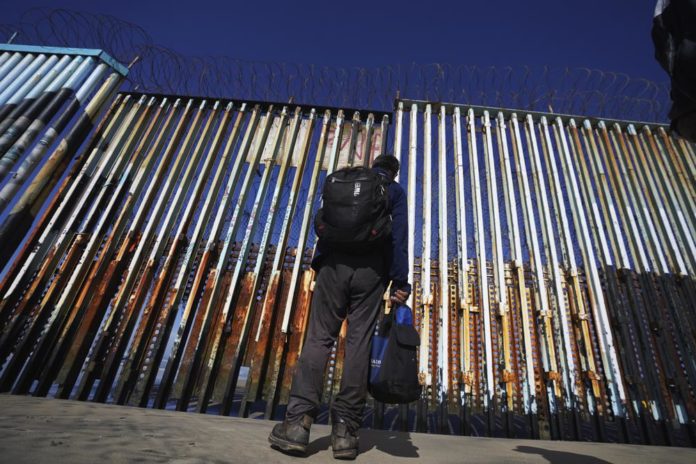
Ask the millions of migrants who have either entered the United States or are lined up at the border what motivated their journeys, and all will answer that they’re in pursuit of the proverbial better life. Translated, a better life means they’re longing to become consumers—consumers of housing, hard goods like cars, and natural resources such as water, electricity, and natural gas. The migrants’ goal is great news for big businesses that never met a consumer they don’t love but bad news for environmentalists who hope to preserve a vanishing America. As conservationists look ahead, the future they see is unsettling.
With Title 42 set to expire on December 21st, U.S. Rep. Tony Gonzales (R-TX), whose district includes 42% of the Texas-Mexico border, predicts a “hurricane” of illegal immigration. Everyone in his district, Gonzales said, is in “batten down the hatches” mode as they await a historic and unmanageable increase in migration—more eventual consumers. Border patrol agents advised Uvalde residents to expect about 150 daily migrant drop-offs indefinitely, evidence which, Gonzales said, proves that the Biden administration has no meaningful plan to cope with the ongoing invasion. Because of the COVID-19 pandemic, Title 42 has been enforced since March 2020 to expel migrants at the southern border. But, in November, in his 49-page opinion, U.S. District Court Judge Emmet Sullivan, President Bill Clinton’s appointee, ruled that Title 42 is “arbitrary and capricious” and violated federal regulatory law.
For FY 2022, an estimated 5.5 million aliens, a total that includes the 4.4 million that CBP reported, and 1.1 million gotaways, are in the U.S. interior. Princeton Policy Advisors’ analyst Steven Kopits, who correctly predicted the FY 2022 crisis, wrote that “… based on the last two months [October and November], 2023 should set yet another record for illegal border crossing — and by a substantial margin over 2022.” March, April, and May 2023 will be, Koptis concluded, especially high as part of the illegal immigrant siege. Only if Republicans captured both congressional chambers, Kopits envisioned, could the migrant invasion be halted—wishful thinking as the mid-term results were tallied.
The red tsunami that Kopits saw as the vehicle that might level off illegal immigration turned out to be a mere trickle. The House will have a narrow margin, and the Senate remains under Democratic control. All fifty senators have, since 2020, an unbroken voting record that supports open borders. Many of those senators are captives of the corporate donor class that wants the steady stream of consumers to continue unabated.
Environmentalists should be front and center in the battle to preserve the nation’s green space and irreplaceable resources. But not only have congressional Democrats abandoned limiting immigration to sustainable levels, but environmentalists have also given up the battle. Although population surges destroy the ecosystems, wildlife habitat, and farmland that exists between their cities and towns, no large environmental group today advocates for saving natural habitat from relentless growth. The Census Bureau projects that by mid-century, immigrants and births to immigrants will drive more than 85% of U.S. population growth and add more than 100 million people to its current 333 million population.
America has one of the world’s largest ecological per capita footprints, 8.04. Any and all U.S. population growth— let alone the massive multi-million-person border surge–will grow its existing footprint. The average U.S. citizen’s ecological footprint is about 50% larger than that of the average person in most European countries. The nation has more suburban sprawl and less public transportation than most countries, which means it burns more fossil fuels that add to its per-capita carbon consumption and uses more energy and water per person than most other developed countries.
No one in the Biden administration or in Congress, or among the major environmental organizations has meaningfully addressed the open border’s long-term consequences, even though they are potentially dire. E.O. Wilson, biologist, and writer, expressed the ecological threat dramatically but accurately: “The raging monster upon the land is population growth. In its presence, sustainability is but a fragile theoretical concept.”
Joe Guzzardi is a nationally syndicated newspaper columnist who writes about immigration and related social issues. Joe joined Progressives for Immigration Reform in 2018 as an analyst after a ten-year career directing media relations for Californians for Population Stabilization, where he also was a Senior Writing Fellow. A native Californian, Joe now lives in Pennsylvania. Contact him at jguzzardi@pfirdc.org.













